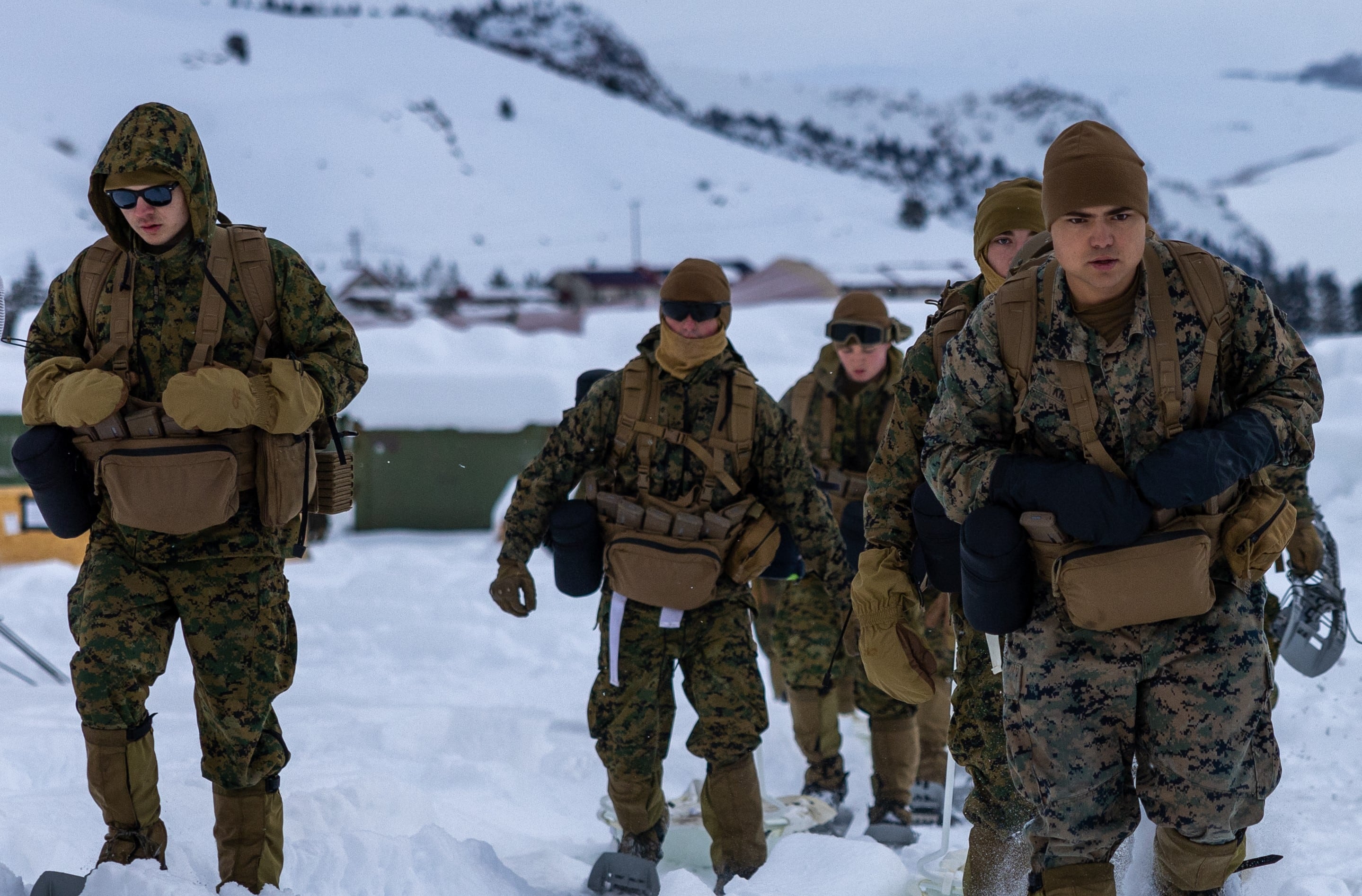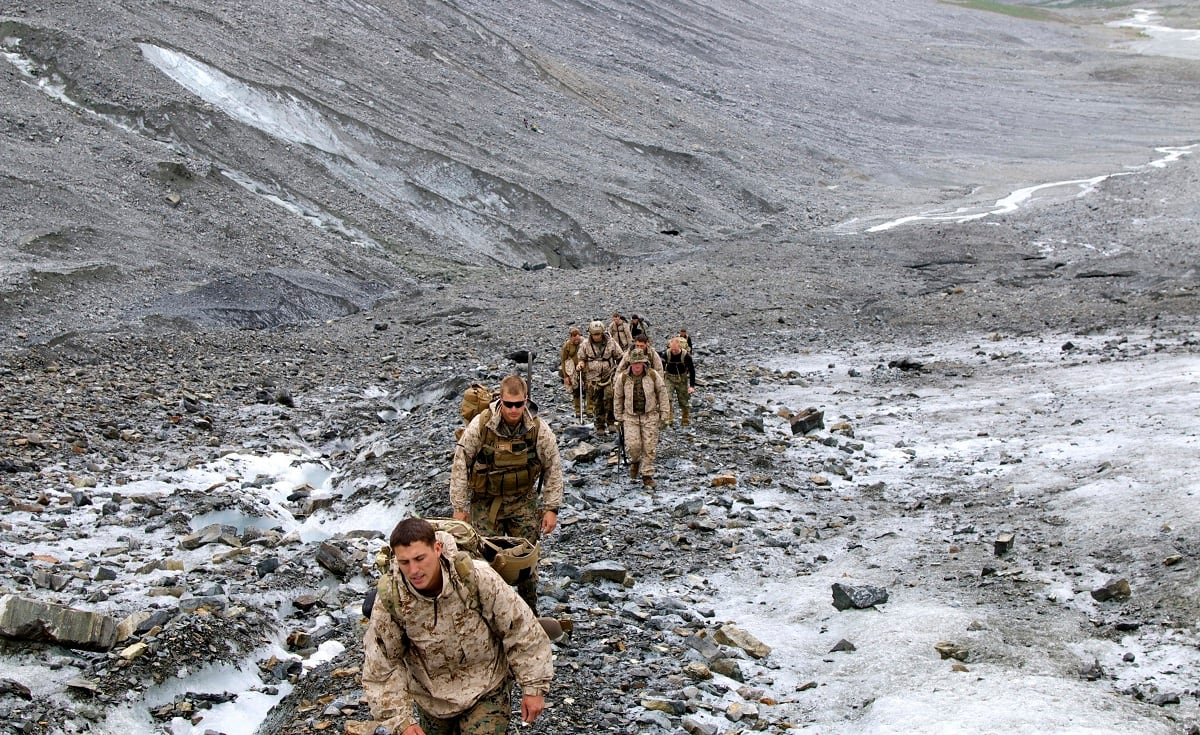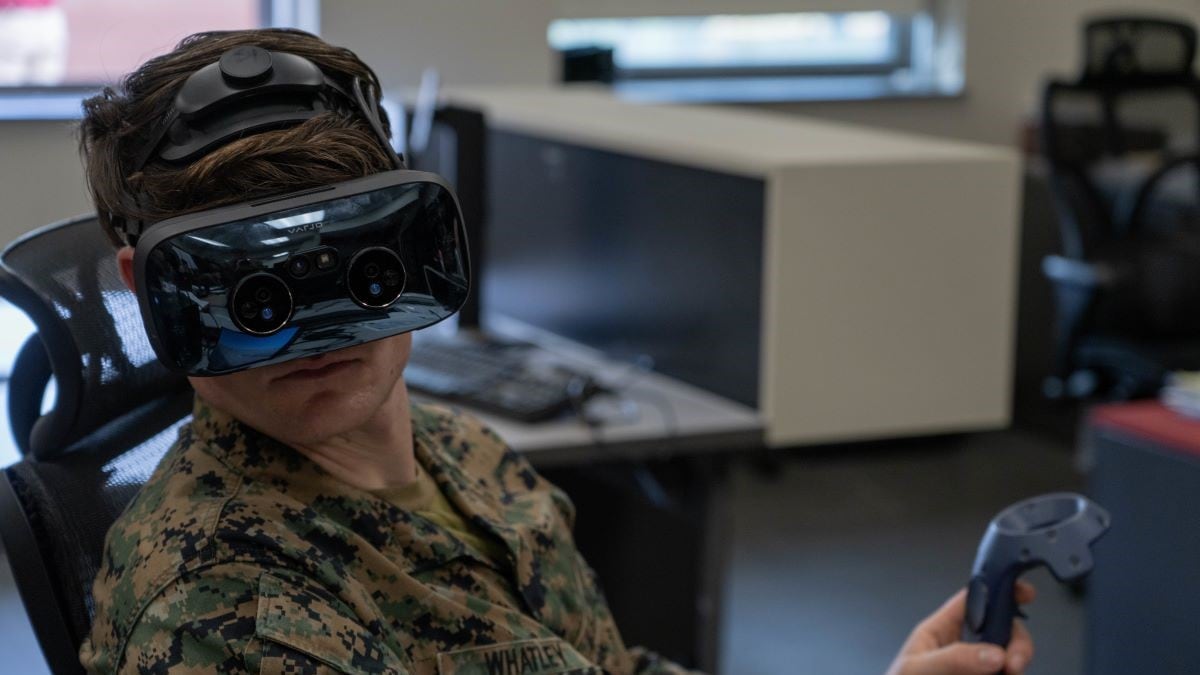Lt. Col. Clinton Hall enlisted in the Marine Corps in December 1997, midway through a first semester in college that wasn’t going well.
He went through boot camp — right at the time the Marine Corps was rolling out the final boot camp event, the Crucible, at recruit training — and then infantry school. Hall went on two deployments and became a scout sniper.
After getting out of the Marine Corps and working in security for several months, and not liking it very much, he reenlisted. On his second enlistment, he filed an application for the Marine Corps Enlisted Commissioning Education Program.
“I chose to apply for a commission because I recognized that the chain of command quickly departs from the enlisted ranks and runs through officers,” he said in a recent news release. “My ability to make an impact would be best realized as an officer.”
Hall received his commission, and, newly an officer, the infantryman reported to 1st Battalion, 5th Marine Regiment, 1st Marine Division, in 2007.
“It was rewarding but also somewhat like a daunting task,” he told Marine Corps Times. “Like, ‘Oh, now there’s more expectation. There’s more responsibility.’ So there’s also a little bit of increased weight of what you must do, but also the training has been proven over multiple decades, if not centuries, on how to prepare our young officers.”
His training and education didn’t end with The Basic School or Infantry Officer Course. He went on to the Marine Corps University’s Expeditionary Warfare School and the Army’s Command and General Staff College.
“It’s vital,” he said of professional military education. “It makes one just pause for a minute and then think and reflect and broaden their horizons.”
Now, Hall is the commanding officer of 2nd Battalion, 5th Marine Regiment — the same regiment he started out in.
In coming years, it’s likely that more Marines than before will have opportunities like Hall’s, from enlisted-to-officer commissioning programs to professional military education. That’s just one component of the Marine Corps’ new training and education plan.
The Marine Corps is in the middle of a sweeping modernization effort, called Force Design 2030, particularly aimed at adapting the service to a potential conflict with adversaries like the Chinese military. But the Corps has acknowledged that its current training and education aren’t sufficient to prepare Marines for that modernization.
That’s where Training and Education 2030 comes in. The planning document, released in January, looks to address some of the gaps in the preparation Marines receive.
It calls for new doctrine on topics like drone and cyber operations. It emphasizes the role of training simulators for even junior Marines. And, taking “every clime and place” to heart, it indicates the Corps needs to find new training grounds (Alaska, anyone?) and double down on swimming skills.
Other initiatives, like increasing the number of seats in ongoing education and enlisted-to-officer programs, are supposed to give Marines incentives to stay in. That has been a top priority for the Corps in recent years: retaining Marines in the right jobs so that they’re prepared for increasingly complex modern warfare.
“We must transform our training and education continuum,” Lt. Gen. Kevin Iiams, commander of Training and Education Command, said in a news release. “We owe it to our Marines and the American people as the premier force in readiness.”
New training sites
Lace up your intense cold weather boots: The Marine Corps is considering training its troops in Alaska.
In the training planning document, the service notes the need to explore options to expand “unit and service-level training into Alaska” and whether the service requires a more permanent presence there.
Included in the report is a direction to analyze whether the cold, remote environment of Alaska could offer Marines a new style of terrain they have not regularly had the opportunity to train with.
Currently, the Marine Corps Mountain Warfare Training Center in Bridgeport, California, is one of the only installations to offer Marines training in mountainous, cold-weather environments.
RELATED

Iiams said during a roundtable event with reporters at the Pentagon in January, “Our cold weather training range up at … Bridgeport, while large, is nowhere near as large as the training ranges in Alaska.”
“You can put much larger forces into the field and exercise them then we can at our small training facility ... at Bridgeport.”
Marines also have conducted cold-weather training on deployments to Norway.

“The current T&E system is not preparing the Marine Corps for the future operating environment,” the report said, noting that Marines need to be better equipped to handle all types of domains.
With a renewed focus on the Indo-Pacific, and continual threats from countries like Russia, North Korea and China, the service is eager to resolve that dilemma.
“Every clime, every place,” Col. Mark Smith, the director of Training and Education Command’s Range Training Programs Division, said at the roundtable.
A further timeline on when the evaluation of using Alaska for Marine Corps training purposes has yet to be announced, though Iiams said at the roundtable that an annual update on the training report, similar to the other planning documents, is likely.
Further changes to ranges and training areas for Marines — including guidance on updates to various education courses offered — were laid out in another recent report, called Installations and Logistics 2030.
By April, the Marine Corps says it will “identify supplemental ranges, training areas, and federated [virtual simulator] venues” to offer all types of training for troops, the training document notes.
Training with simulators
Service leaders are especially interested in using high-tech simulators as a modern means of training troops and are looking to operationalize what they call Project Tripoli to connect Marine Corps, joint and partnered nation units around the globe.
“If we think Marines will encounter either an enemy capability or a situation on tomorrow’s battlefield, then we want to ensure our Marine experiences it first within our training environments,” Col. Mark Smith, Director, Range Training Program Division, said in a statement to Marine Corps Times. “It’s the old saying of ‘a pint of sweat will save a gallon of blood.’”
Live-fire training is vital, Smith said, but it’s also limited by safety constraints and the lack of a free-thinking enemy. Advanced weapon systems come with additional complications because of the long ranges or the effects of the munition, he added.
Marines across installations will be able to jump into a virtual space and interact with one another in order to practice simulated missions, according to Iiams, meaning a lance corporal wearing ocular lenses on a range somewhere can look up and see a plane flying overhead operated by a pilot using another simulator.
RELATED

The training document notes that the Corps will have a cost estimate for the project by March and that it will be fully employed by September 2024.
The report also calls out the need to evaluate the service’s airspace needs in support of expanded training across its installations.
A “rigorous” advanced rifle qualification course after entry-level training is being piloted and is “progressing toward full operational capability,” Col. Eric Quehl, Training and Education Command’s director for policy and standards, shared in other training news from the roundtable.
A servicewide memo in February added that a plan that supports implementing an advanced marksmanship training program throughout the infantry training continuum will also be developed.
Sink or swim
Marines are soon going to need to pull out their goggles and brush up on their breaststroke.
“All Marines should expect the standards to be elevated and require additional training in the water,” the planning document said.
Included in the report is a direction for updated Marine Corps Water Survival Training policies.
“What we have found through our analysis is that we need to get Marines more comfortable in the water,” Quehl said.
“So what can Marines expect out of this? We’re definitely going to have some more rigorous training,” he said, adding the changes to standards will likely take place in the next six to eight months.
RELATED

Marines across all military occupational specialties, from entry-level troops through the fleet Marine force, can expect their standards to be reevaluated, Quehl said, but troops serving as assault amphibian operators or pilots can expect still higher qualification requirements. His team even explored the possibility of further training in the open water as a regular, repeatable training exercise, he said.
“Modern equipment and manpower models go a long way, but Training and Education 2030 enables the critical final steps for creating a smarter, more capable, more lethal force,” Commandant Gen. David Berger said in a press release about the new document.
The report directs an update on water-training policies to be published in May and for the deputy commandant for installations and logistics to develop a list of water-training facilities required to be built or modified for the expansion of swim training by June.
As the military shifts its focus from operating in the desert environment of the Middle East and Afghanistan to the Indo-Pacific, Marine leaders want to ensure troops are prepared to handle an aquatic environment.
“We actually want to build confidence and capability in the water, so they are ready for the Pacific theater,” Iiams said during the roundtable.
The move for revised water safety standards comes following concern over the swimming abilities of the force.
In 2022, at least two Marines drowned during recreational swimming, and another drowned during a training incident, Marine Corps Times previously reported from Naval Safety Center data.
Revamping educational opportunities
The Marine Corps also is planning to look closely at the professional military education it offers, including to sailors.
The Marine Corps University, in Quantico, Virginia, has in recent years placed increased emphasis on naval warfighting, according to the training report. That comes as the Corps is focusing more on amphibious operations that require greater green-blue integration.
If it’s offering more content related to the Navy, Marine Corps University should have more faculty and students from the Navy, the report says.
The Corps also is launching an assessment of the university faculty and “provide recommendations for changes in resourcing, policies, or structure.” Meanwhile, the fleet will offer feedback to the university and other professional military education institutions about the curricula they offer.
“As we prepare for the future fight, we need Marines who possess the intellectual ability to out-think their adversaries,” the report states. “We hone this ability through deep and active engagement with the brightest minds and the most challenging material, which forces Marines to contend with their assumptions, perceptions, and concepts.”
The Corps will expand the number of slots at professional military education schools, as well as “special duty assignment opportunities, Army Airborne school quotas, degree completion and certification programs, retraining in another primary MOS (PMOS), and enlisted-to-officer commissioning programs.”
In fiscal year 2022, 187 officer accessions came from enlisted-to-officer commission programs, according to spokeswoman Yvonne Carlock. The Corps is looking at increasing that number to 279 in fiscal year 2023.
Historically, enlisted-to-officer programs have accounted for approximately 10% of Marine officer accessions, Carlock said. Although the service hasn’t settled on targets for fiscal year 2024, it anticipates the percentage to remain well above 10%.
‘Train to retain’
Marine Corps leaders said they are hopeful the updates to training and education will not only create a better prepared force but also encourage more Marines to stay in or join the service.
Sgt. Daisy Swiney, 21, told Marine Corps Times moments after reenlisting early at a ceremony in February that she became a Marine to give herself a better future.
She started out as a food service specialist. But, after standing out from her peers and receiving additional training, Swiney became the legal chief and national color bearer. In July 2024, she heads to drill instructor school, one of her longtime goals. A proud Marine, she said she’s excited to make future Marines.
In total, the Corps is looking to retain at least roughly 12,000 active-duty service members this fiscal year and another roughly thousand Reserve troops, according to spokesman Maj. Jordan Cochran.
“The Marine Corps is on-track to exceed its aggregate retention mission and much earlier than [last fiscal year]. “We’ll use the remainder of ... this year to target reenlistments within key skills that still have retention or lateral move opportunities, some of which have very substantial available bonuses.”
In February, the service already met its infantry reenlistment goals, and first-term retention of top-performing Marines was up 72%. The Marine Corps also plans to recruit 28,900 active-duty enlisted Marines over the course of this fiscal year, Cochran said. That is about 300 more service members than it recruited last fiscal year. It additionally aims to bring in 5,093 new Reserve troops, also higher than the accession target it met in 2022 of 4,602 enlisted troops.
The Corps already is planning for its fiscal year 2024 retention campaign, which will begin on the first day of June, according to a Feb. 6 memo.
Hall, the prior-enlisted lieutenant colonel, said that he thinks most Marines want the opportunity to deepen their knowledge of their military occupational specialties, as well as broaden their horizon. That kind of ongoing education makes Marines more likely to stay in. “Marines like to be challenged,” he said. ■





